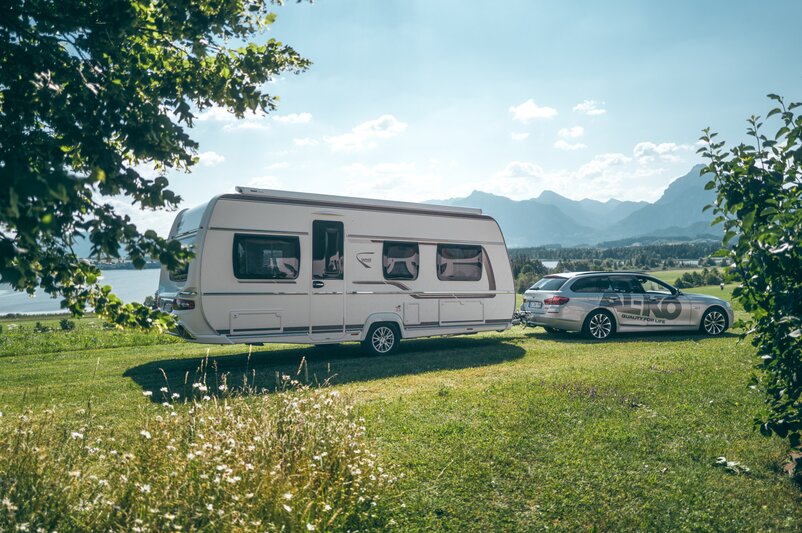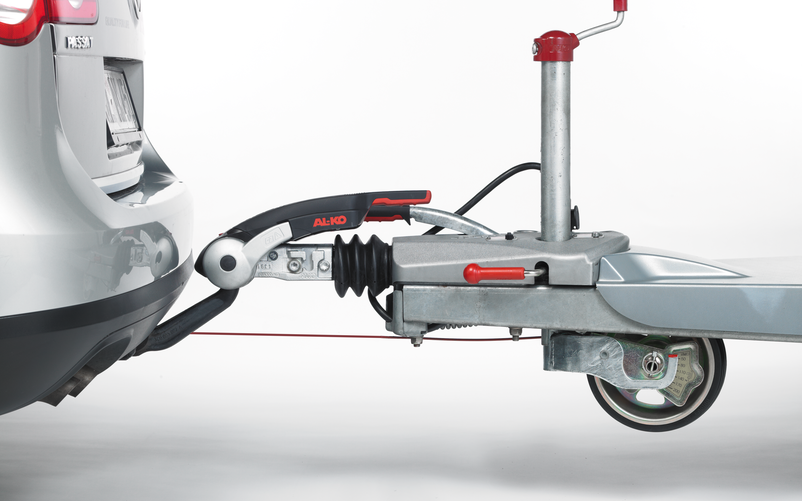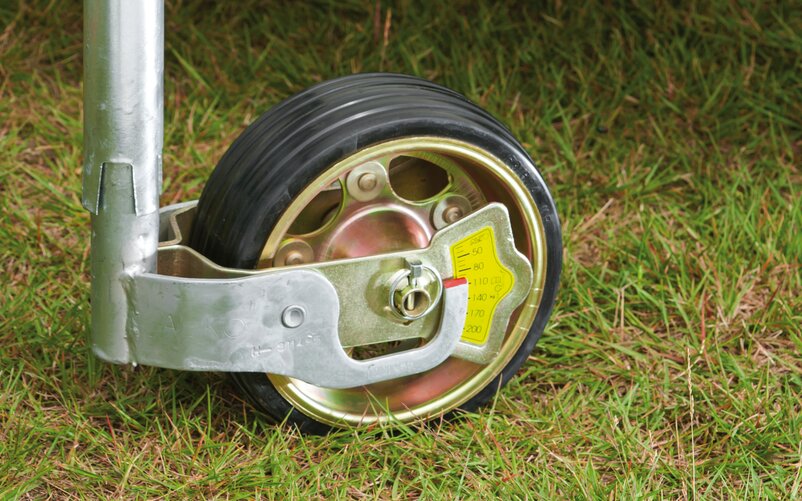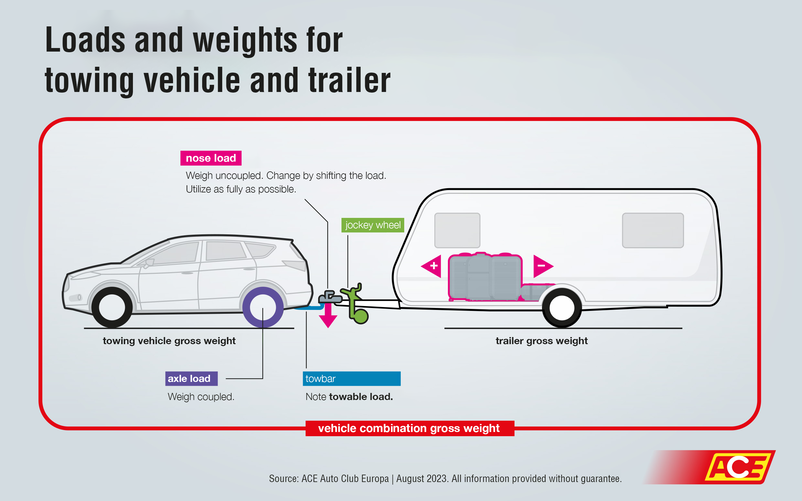Il vademecum di AL-KO per caricare correttamente il tuo veicolo ricreazionale
Sicurezza per te e per gli altri utenti della strada – è questo l’obiettivo principale di un carico ben distribuito. Naturalmente anche il comfort di guida, i consumi di carburante e i limiti tecnici hanno la loro importanza, ma alla fine vengono dopo il fattore principale: la sicurezza alla guida.


I punti fondamentali in sintesi
- Il peso e la sua distribuzione sono i fattori chiave per una guida sicura
- I consigli utili per caricare correttamente e ridurre il peso complessivo
Perché è importante caricare correttamente
I fattori decisivi per un carico corretto sono il peso complessivo e la distribuzione del carico. Un peso eccessivo o troppo ridotto può influenzare negativamente la risposta del veicolo alla guida. Se questi due aspetti sono ben bilanciati, sei sulla strada giusta. Ma come si ottiene questo equilibrio e cosa può succedere se non si seguono le regole?
Le particolarità delle caravan
Nel caso delle caravan, entra in gioco un ulteriore fattore: il rischio di sbandamento, oscillazioni o addirittura ribaltamento durante la marcia. Un rimorchio sovraccarico, troppo leggero o caricato in modo scorretto può causare problemi alla guida anche a velocità moderate. Oltre al carico, è fondamentale mantenere una velocità contenuta, soprattutto in curva, su strade tortuose e in presenza di raffiche di vento o su ponti. Dispositivi tecnici come il giunto stabilizzatore contribuiscono a una guida più stabile e sicura. In caso di emergenza, riduci immediatamente la velocità senza frenare bruscamente.
Carico corretto: i nostri 7 consigli principali
Caricare correttamente significa non sovraccaricare (né sottocaricare) il rimorchio e distribuire il peso in modo intelligente:
- Rispettare i limiti di peso indicati dal costruttore
- Se possibile, sistemare i carichi pesanti in basso e vicino agli assi del veicolo
- Gli oggetti di peso medio – come scarpe, utensili da cucina o scorte alimentari – vanno sistemati negli scomparti bassi o nei mobili inferiori
- Gli scomparti superiori vanno usati per trasportare oggetti leggeri come abbigliamento o stoviglie da campeggio dal peso contenuto
- Fissare bene il carico per evitare che oggetti liberi possano muoversi e diventare pericolosi in caso di frenata brusca: gli oggetti vanno sistemati in vani chiusi o fissati con cinghie
- Gli animali domestici devono viaggiare in sicurezza, proprio come i passeggeri. In Germania, cani e gatti sono considerati carico: è quindi obbligatorio utilizzare trasportini, gabbie fissate o imbracature con cintura di sicurezza
- Per maggiore sicurezza, una volta completato il carico, pesa il veicolo
Come pesare il tuo veicolo ricreazionale
Esistono diversi modi per pesare il camper o la caravan. Se non disponi di una bilancia adatta, puoi cercare una pesa pubblica o chiedere ad aziende di trasporto o impianti di smaltimento rifiuti se è possibile utilizzare le loro bilance, riconoscendo un piccolo compenso per il disturbo.
Presso i rivenditori specializzati a volte si trovano piccole bilance portatili da posizionare sotto le ruote, utili anche per determinare il carico su una ruota o su un asse (carico verticale). Per i proprietari di caravan, il ruotino d'appoggio AL-KO con indicatore di carico integrato permette di conoscere il peso che grava sul gancio di traino.
Massa in ordine di marcia
- Dove trovarla (difficile): Carta di circolazione parte 2, voce G
La massa in ordine di marcia di un veicolo ricreazionale indica il peso del camper o della caravan in condizioni idonee alla circolazione, comprendendo: dotazioni aggiuntive installate dal produttore, eventuale serbatoio carburante pieno al 90%, tutti i liquidi che servono a far funzionare il veicolo, una bombola di gas completamente piena e il serbatoio delle acque bianche pieno in una misura definita dal produttore (di solito 20 litri sul totale disponibile) più il peso del conducente calcolato forfettariamente in 75 kg. Il risultato è un valore comunque indicativo, che serve soprattutto a comparare veicoli simili in fase di acquisto: il peso di eventuali accessori, anche installati all’origine (tendalini, moduli fotovoltaici, batterie aggiuntive e così via), va aggiunto a questo valore. In teoria, la massa in ordine di marcia dovrebbe essere indicata sulla carta di circolazione, ma il campo che dovrebbe comprendere quel valore, sui documenti italiani, è desolantemente vuoto: per conoscerla, bisogna affidarsi alle comunicazioni del produttore.
Massa complessiva consentita
- Dove trovarla: Carta di circolazione parte 2, voce F.2
La massa complessiva consentita è il peso massimo totale ammesso del camper, caravan o furgone, comprensivo di persone, oggetti e attrezzature, durante la circolazione. Per conoscerlo con esattezza conviene pesare il veicolo al momento del viaggio, includendo anche il conducente, e tenendo conto della variabilità dei serbatoi e delle bombole (più o meno pieni). Nel caso di un veicolo con rimorchio, la massa complessiva totale si ottiene sommando quella del veicolo trainante a quella del rimorchio.
Portata utile e aumento della portata
La portata utile è la differenza tra la massa complessiva consentita e la massa in ordine di marcia del veicolo.
- Esempio: 3.500 kg (massa complessiva) - 3.000 kg (massa in ordine di marcia) = 500 kg di portata utile
Se la portata utile della tua caravan non basta, puoi valutarne un aumento. Questo consente di incrementare il peso massimo autorizzato, così da poter trasportare più attrezzature o aggiungere dotazioni extra. Sul nostro sito trovi tutte le informazioni e una checklist per presentare la richiesta di aumento.
Carico sugli assi
- Dove trovarlo: Carta di circolazione parte 2, voce N (solo per veicoli con massa complessiva superiore a 3.500 kg) o nella targhetta di omologazione fissata sul telaio o nel vano motore. A volte è indicato anche nel libretto di uso e manutenzione o su un adesivo.
Indica il peso che grava sull’asse (o sugli assi) e che viene trasferito alla superficie stradale. È un valore importante per camper, furgoni, caravan e veicoli trainanti.
Indice di carico degli pneumatici
- Dove trovarlo: sul fianco dello pneumatico (insieme a informazioni su misura, larghezza, diametro cerchio, indice di velocità)
L’indice di carico (LI, Load Index) rappresenta la capacità di carico massima dello pneumatico a una pressione standard di 2,5 bar. Non bisogna mai superare questo valore per garantire la sicurezza alla guida, e conviene anche controllare l’età degli pneumatici.
- Esempio: Pneumatico con marcatura 225/65 R16 91 CP 109 Q → il numero 109 indica che ogni pneumatico può sopportare fino a 1.030 kg. A pressioni inferiori il carico sopportato diminuisce, a pressioni superiori aumenta. Online si trovano tabelle per interpretare l’indice. In caso di dubbio, è sempre meglio verificare la documentazione tecnica del produttore.
Carico verticale (sul gancio di traino)
- Dove trovarlo: a volte sulla carta di circolazione (nelle note) o nel libretto di uso e manutenzione del veicolo trainante, in una targhetta sul gancio, nella documentazione tecnica del gancio
Indica il peso esercitato da timone della caravan sul gancio di traino del veicolo. Il suo valore è solitamente compreso tra 50 e 100 kg e può essere misurato con una bilancia apposita per carico verticale o tramite una scala integrata nel ruotino d’appoggio.
- Formula di calcolo: Carico verticale = (Carico verticale massimo del veicolo trainante x lunghezza del timone) / Distanza tra il centro dell'asse e il centro della ruota d'appoggio
Massa rimorchiabile
- Dove trovarla: Carta di circolazione parte 2, voce O
La massa rimorchiabile indica il peso massimo che il veicolo può trainare. Dipende da vari fattori, tra cui il modello del veicolo e il tipo di gancio traino. Nei grandi fuoristrada, di norma, varia tra 1.500 kg e 4.500 kg.
Se l’insieme di veicolo trainante e rimorchio (il cosiddetto “treno”) non supera i 3.500 kg si può guidare con la patente di categoria “B”. La stessa patente è comunque sufficiente se il rimorchio trainato non pesa più di 750 kg, per un totale di 4.250 kg. Se il rimorchio pesa più di 750 kg (come la quasi totalità delle caravan) e la massa totale è compresa tra 3.501 e 4.250 kg serve la patente B96. In caso di massa superiore (con il rimorchio che da solo non può comunque superare i 3.500 kg, per un totale massimo quindi di 7.000 kg) serve la patente BE. Va ricordato che nella guida non basta rispettare le masse ammesse sulle carte di circolazione, ma bisogna rispettare anche il peso reale in fase di circolazione.




